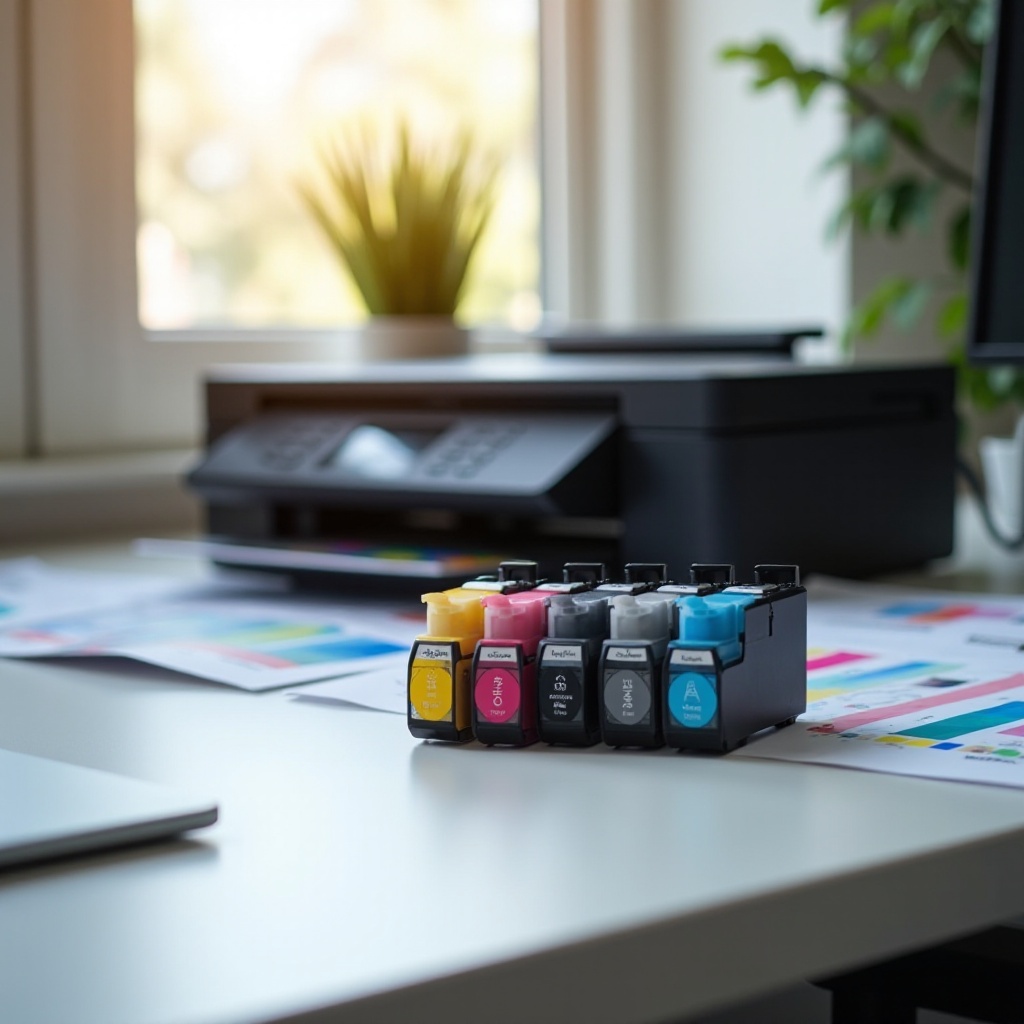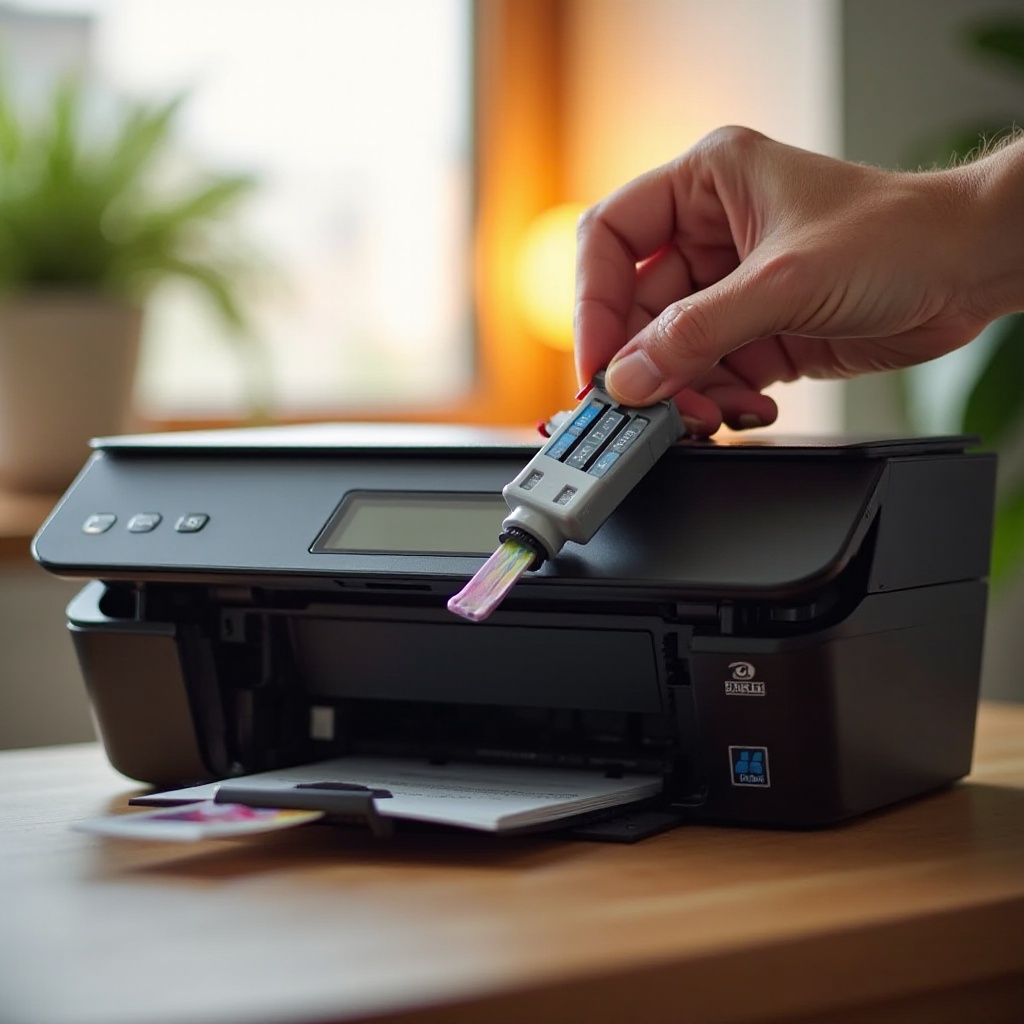Introduction
Printer ink problems often arise at the most inconvenient times, causing stress and disrupting both personal and professional tasks. Smudged prints, faded images, and persistent ‘low ink’ warnings are common headaches in many work environments. By tackling these issues head-on, you can save time and money, and preserve your peace of mind. In this comprehensive guide, you’ll learn how to address common printer ink issues and implement preventative strategies to minimize future disruptions.

Understanding Common Printer Ink Issues
Common printer ink problems come in various forms, each presenting unique challenges. Ink cartridge errors can occur when the printer fails to recognize a newly installed cartridge or mistakenly flags it as empty. Print quality issues, such as faded or streaky images, are frequent hurdles. Furthermore, ink clogs and leaks can lead to major damages if ignored. Recognizing whether these issues result from user error or mechanical malfunctions is crucial for effective troubleshooting. Understanding these common dilemmas sets a solid foundation for developing problem-solving skills.

Step-by-Step Guide to Fixing Printer Ink Problems
Resolving Ink Cartridge Issues
-
Check Cartridge Installation: Ensure the ink cartridge is correctly installed by removing and reinserting it, making sure it’s secure and properly aligned.
-
Inspect Cartridge Compatibility: Confirm the cartridge is compatible with your specific printer model, using the correct brand and model number is essential.
-
Reset the Printer: Simple resets can often resolve recognition issues. Turn off your printer, unplug it, wait for a few moments, and restart it.
Addressing Print Quality Problems
-
Run Print Head Cleaning: Utilize your printer’s maintenance settings to perform a printhead cleaning cycle, which can help clear minor clogs.
-
Perform a Nozzle Check: Print a test page to pinpoint issues, helping you determine which colors aren’t printing correctly.
-
Replace Old or Faulty Cartridges: If cleaning isn’t effective, consider replacing old or malfunctioning cartridges.
Dealing with Ink Clogs and Leaks
-
Manually Clean Print Heads: If automatic cleaning doesn’t resolve clogs, remove the printhead and clean it gently with a soft cloth and distilled water.
-
Check for Leaks: Examine the inside of the printer for visible ink leaks, cleaning them immediately to avoid further damage.
-
Use a Printer Maintenance Kit: These kits provide solutions and tools for thoroughly cleaning printer heads and other components, providing an effective deep cleanse.
Mastering these steps will not only help in resolving current issues but also boost your confidence in managing future printer challenges efficiently.
Preventative Measures for Future Ink Problems
Keeping Your Printer Clean
-
Regular Interior Cleaning: Thoroughly clean the printer’s interior monthly to remove dust and debris, preventing obstructions and potential clogs.
-
External Cleaning: Regularly wiping the printer’s exterior helps keep dust from seeping inside.
Using the Right Type of Ink and Paper
-
Use Genuine Ink Cartridges: While cheaper third-party cartridges might save money upfront, they can lead to complications and aren’t always worth the risk.
-
Select Appropriate Paper: Always choose high-quality paper tailored to your printer model to reduce jams and ensure excellent print quality.
Utilizing these preventative tactics enhances your printer’s longevity and reliability, reducing frustrations and ensuring optimal performance over time.

Conclusion
Though printer ink issues are not unusual, they no longer need to interfere with your productivity. By understanding the root of common problems and applying step-by-step solutions, you can tackle most ink challenges with ease. Furthermore, preventative measures fortify your defenses against future problems, ensuring a smoother printing experience overall. Equipped with the knowledge and strategies from this guide, you’re ready to confidently handle both current and future printer ink problems. Seize this opportunity to transform your printer challenges into effortless and efficient management.
Frequently Asked Questions
How often should I clean my printer heads?
You should clean your printer heads about once a month or whenever print quality declines to prevent clogs and ensure optimal performance.
Can I use third-party ink cartridges?
While you can use third-party cartridges, they might lead to compatibility issues and reduced print quality. Using genuine manufacturer-recommended cartridges is advisable.
What should I do if my printer is still not working after trying these solutions?
If problems persist, contact your printer manufacturer’s support for further assistance, or consult with a professional technician to diagnose and repair the issue.